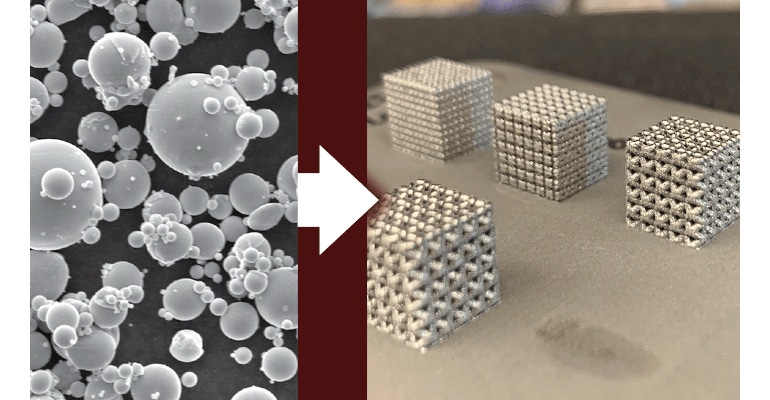3D-Printed Shape Memory Alloy Has High Superelasticity
Researchers demonstrate the fabrication of metals with properties for advanced aerospace or medical applications.
July 28, 2022

Researchers have used a common metal 3D-printing process to fabricate a nickel-titanium shape memory alloy with unprecedented elasticity, paving the way for more cost-efficient use of the material in advanced manufacturing applications, they said.
Researchers from Texas A&M University recently demonstrated the material, which they said nearly doubles the maximum superelasticity reported to date for an alloy of this type fabricated by 3D printing. Specifically, the team used a laser powder bed infusion technique, a common method for 3D printing with metals, to produce the alloy.
Shape memory alloys are smart materials that can remember their high-temperature shapes. While scientists have successfully fabricated nickel-titanium alloys using additive manufacturing (AD) before, metals fabricated in this way rarely show the superelasticity required for biomedical and aerospace applications because they generally incur defects and changes during the 3D-printing process, researchers noted.
“Although they can be utilized in many ways, fabricating shape memory alloys into complex shapes requires fine-tuning to ensure the material exhibits the desired properties,” Lei Xue, a former doctoral student in the Department of Materials Science and Engineering at Texas A&M who worked on the research, said in a press statement.
By demonstrating the ability to produce shape memory alloys with increased superelasticity using 3D printing, researchers have fabricated materials that are more capable of handling applied deformation. Using 3D printing to develop these materials will reduce the cost and time of the manufacturing process, they said.
Optimizing the 3D Printing Process
Laser powder bed fusion is an AD technique—similar to polymer 3D printing—that deposits metal powders layer by layer, using a laser to fuse them together into a shape. One benefit to advanced industries is that it can create parts with complex geometries that would be impossible to fabricate in traditional manufacturing, Xue explained.
The problem with most nickel-titanium materials is that they don’t come through the process well, often resulting in producing shapes with defects such as porosity, warping, or delamination. Large thermal gradient and brittleness from oxidation causes these malformations, researchers said. Moreover, the laser can change the composition of the material due to evaporation during printing.
The key to researchers’ success this time is that they used an optimization framework they developed in a previous study to solve the issue of defect formation during the printing process, they said. The framework helped them determine optimal printing parameters to set specific material properties and achieve defect-free structure.
Using this framework—along with a change in material composition as well as refined process parameters—the team developed nickel-titanium parts that consistently exhibited high superelasticity. Specifically, the alloys demonstrated room temperature tensile superelasticity of 6 percent after printing and before post-fabrication heat treatment, researchers reported in a paper on their work in the journal Acta Materialia.
Future Applications
The fabrication that researchers demonstrated has the potential to boost the use of printed nickel-titanium shape memory alloys in biomedical and aerospace applications, they said. This can drive down manufacturing costs for products such as biomedical stents, implants, and surgical devices as well as aircraft wings, researchers said.
Indeed, the team hopes their study can be a guide to how to 3D-print nickel-titanium shape memory alloys with specific, desired mechanical and functional characteristics, Xue said.
“If we can tailor the crystallographic texture and microstructure, there are far more applications these shape memory alloys can be used in,” he said in a press statement.
About the Author(s)
You May Also Like



